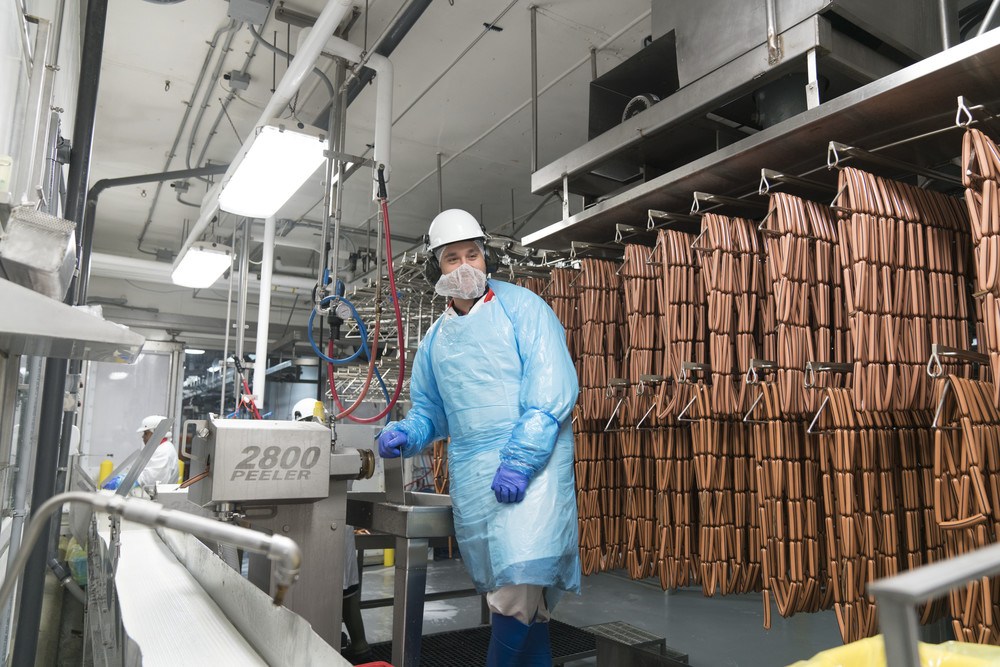Strategy, Legal & Operations
How to cut the risk of procurement fraud eating into profits

Procurement fraud is a growing global problem. It doesn’t hit the headlines as much as card and benefit fraud – but can be extremely costly for businesses.
It involves groups or individuals dishonestly obtaining advantage, avoiding obligations or stealing or redirecting funds during the acquisition, sale or delivery of goods and services.
It’s costlier than you possibly might expect. According to the University of Portsmouth’s Centre for Counter Fraud Studies Annual Fraud Indicator 2017 report, procurement fraud in the UK is estimated to cost £121.4bn (4.76%) of the £2.5tn of total expenditure.
Incidents such as the horsemeat scandal in 2013, Iceland losing profit due to supply chain problems and KFC running out of chicken also showed the big prices that businesses can pay if they don’t have visibility and control of their external procurement processes.
There are various reasons why procurement fraud is increasing, including:
- Higher staff turnover
- Increased outsourcing and offshoring of procurement
- Purchasing from new, less regulated markets
- Increasing complexity of products and services purchased
- Increasing complexity and automation of the procurement process
- Increased collaboration between businesses and increasing use of shared service centres
Good supplier relationships are crucial to the smooth running of a business as they enable it to operate efficiently. However, they are susceptible to fraud due to:
- Pressure to pay on time or early
- Tighter margins – both purchaser and supplier
- Procurement staff doing more with fewer resources
- The increasing velocity of invoicing and other related documents, such as purchase orders
- Complexity working with global suppliers
- New payment technologies
- Enterprise resource planning (ERP), manufacturing resource planning (MRP), supply chain and procurement system introduction and updates
- Procure to pay (P2P) automation advances
- Acquisitions and mergers in your supply chain
Procurement fraud can be difficult to detect because some of it is particularly subtle, meaning it can be harder to investigate.
Different examples of procurement fraud
Fraud can come in many different forms, with new techniques and exploits appearing regularly. The ingenuity and relentless effort of fraudsters should not be underestimated. However, there are a few common examples, such as the following.
Bribes and corrupt influence
There are different types of bribe, which have always been a problem for as long as there have been contracts. A kickback is common – where a commission can be paid to a bribe-taker in exchange for services or supplies rendered. A corrupt payment or gift could also be used to influence a recipient for a successful bid.
What should you be looking for? There could be a broker or middleman where there isn’t an obvious need for one. You should also show suspicion when someone involved in procurement receives gifts or sudden wealth.
Collusive bidding
Bid manipulation or rigging can happen in businesses with high start-up costs and few bidders, such as the construction industry. This is where groups of bidders collude to submit high bids to defeat the competitive process and monopolise it. This can potentially drive up prices.
What should you be looking for? You should view with suspicion bids that are not publicly opened or show unusual patterns. It’s also a warning sign if bids are consistently high compared to cost estimates and industry averages.
Billing fraud
This is where false (where no services are provided), duplicated or inflated invoices are submitted by a supplier or contractor. This can happen through a contractor or supplier alone or in collusion with an employee of the business falling victim.
What should you be looking for? There’s more risk of billing fraud happening if there are weak or unenforced controls when it comes to receiving goods and payments.
Delivery fraud
Contractors, in collusion with a corrupt procurement official, can submit low bids to win a contract, and then increase price and profits by submitting change order requests. Another type of delivery fraud involves contractors delivering sub-quality goods, aware they fail to meet expected quality, and concealing this fact.
What should you be looking for? Delivery fraud can happen where there are weak controls and procedures when it comes to reviewing the need for change orders.
Conflicts of interest
This is where there is deliberate non-disclosure, where a member of a procurement team fails to disclose interests or has unapproved discussions with a contractor or supplier.
What should you be looking for? Be cautious if one of your procurement team shows unexplained or unusual favouritism to a contractor.

Having the right processes in place can help to cut the risk of procurement fraud
Controls to stop procurement fraud
Procurement fraud can come in many different forms, and can be difficult to catch in businesses of all sizes. There are preventative controls that a business should have in its processes, designed to discourage errors and prevent irregularities from occurring. They include:
- The segregation of duties
- Supporting documentation
- Proper checking and authorisation
- Physical control over assets
New tool and technology to combat fraud is regularly released. However, procurement and accounting systems are still driven by people.
This can create an environment ripe for fraud, so it’s often good practice to make sure a segregation of duties is implemented so no single individual is empowered to oversee whole transactions. Businesses should also hire the right people and the right training is provided.
Reconciling supplier accounts is important because it ensures supplier balances are accurate and billing fraud through for example, the duplicating of invoices, doesn’t happen.
Businesses should also have processes in place where they can check services were supplied as per the contract – whether they’re looking at quality, quantity or price. Stock checking and audits are common practice, while with advanced data analytics businesses can also spot variances, outliers and anomalies.
Businesses do have many of these controls in place and have done for many years. However, it’s often people who cause these controls to fail, leaving opportunities for fraud.
People can’t cope with the scale and sophistication of fraud or spot the accidental mistakes, so they need intelligent, automated fraud, risk and compliance tools to help them, to support these control processes.
Business controls fail due to:
- Overriding by management
- Poor application by staff and managers
- A lack of line management monitoring
- A lack of audit
- An assumption that others have performed a control already
- Indifference and a lack of training
- Being overwhelmed by the volume
- Little or ineffective automation
What should businesses do to understand their own level of risk when it comes to procurement fraud, and what kind of anti-fraud controls they should put in place? Steps include the following:
Undertaking of due diligence
It’s vitally important that controls put in place by a business are applied, such as vigilance in checking documents such as purchase order numbers and invoices, making sure they get what they paid for, and payments are made to the correct entity.
In all businesses, staff are processing more invoices than ever before, so it’s clear that advanced analytics to monitor transactions and check for anomalies could be very important. There is little point in having controls if they aren’t imposed.
Sharing of best practices and imposition of standards on suppliers, contractors, agents and recipients
It’s not enough for employees internally to make sure the right controls are in place. Any external organisation that a business works with needs to share the same standards – this could take the form of background checks, making sure suppliers are financially stable and reputable.
Unless a business has visibility and control over external processes, especially in industries that are quality dependent such as food and beverage manufacturing, risks can be enormous.
Fraud response plans put in place
Businesses should expect fraud to happen and have robust, well-communicated fraud response plans in place. These should be regularly reviewed and assessed for relevance and effectiveness.
Again, through tracking and advanced analytics software, businesses can pinpoint supply chain fraud, which means that investment in the right technology could be well worth the money.
Provision of anti-fraud corruption training
Employee education is a crucial foundation in preventing fraud. Management should build an ethical culture among employees, while staff should be trained on what constitutes fraud, the harm it causes and how to report activity which raises red flags.
In some parts of the world, paying bribes is part of the business culture, so a business must make sure that over borders the message comes across.
Fraud and corruption in procurement, particularly in the emerging markets, is still too common. Although risks can never be eliminated, a company can implement controls to make sure the likelihood of fraud happening is cut. These need to be well-considered, robust and, most importantly, applied properly.
Reduce the risk of fraud - webinar
With financial fraud on the increase, want to learn how to reduce your risk profile? Sign up for this webinar and watch expert fraud investigator John Baker of Moore Stephens discusses how to reduce the risk of fraud in your P2P cycle.







Ask the author a question or share your advice